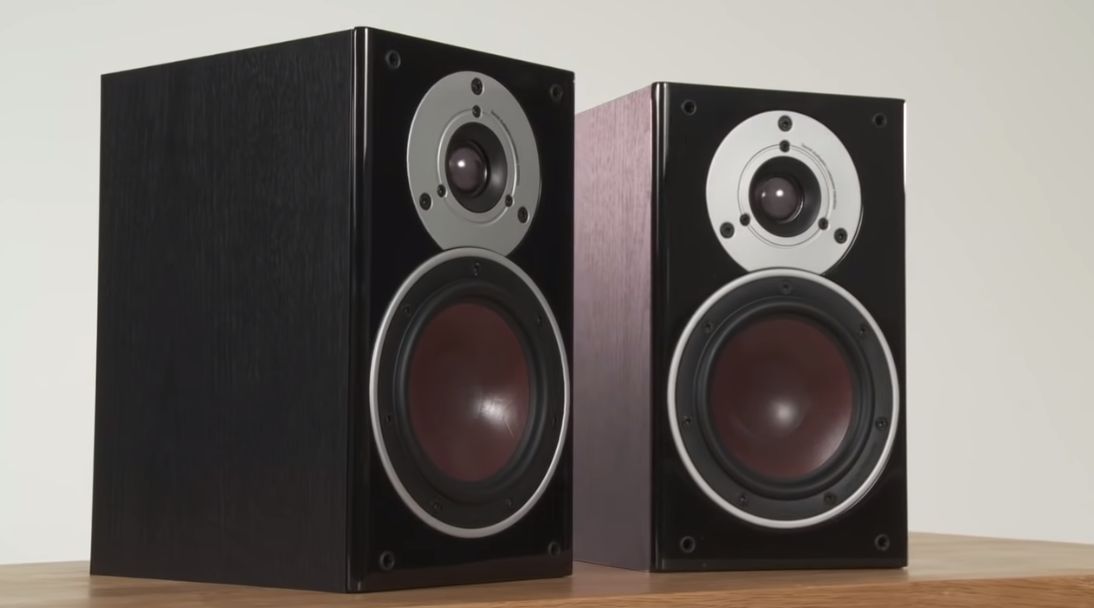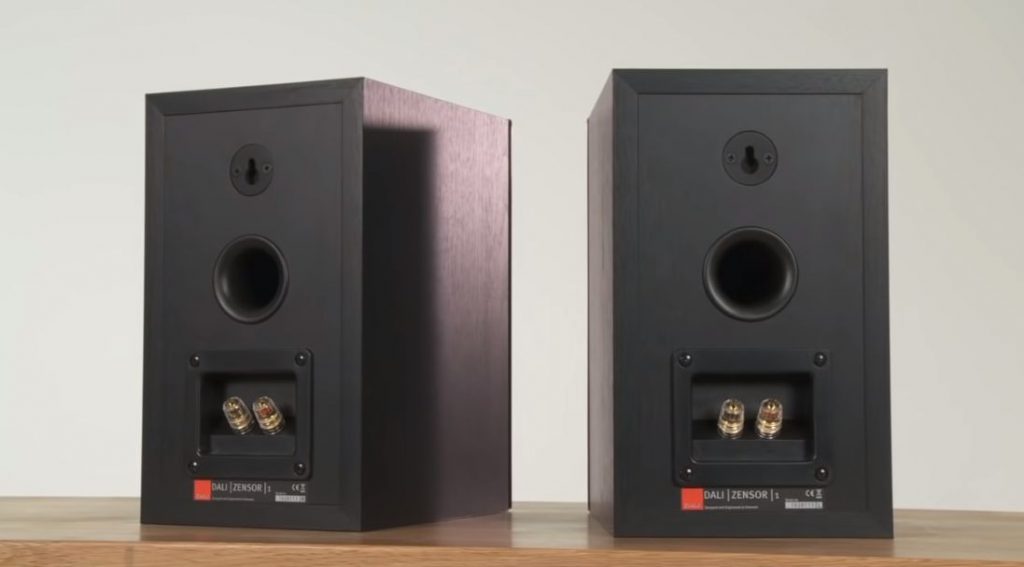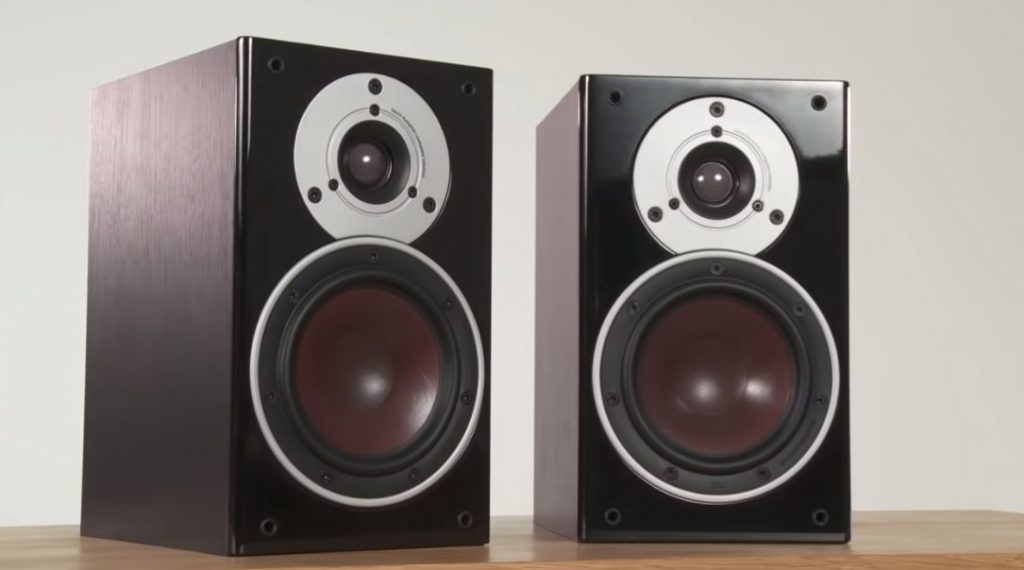Dali Zensor 1 Review
When I first saw the Dali Zensor 1 bookshelf speaker, to be honest, apart from the dark brown 5.25-inch wood fibre diaphragm, which can be recognized at a glance as a Dali signature design, everything else was very ordinary. But after a couple of hours of listening, the Zensor 1 gradually warmed up, and I was deeply impressed by its clear and glossy high-pitched performance and excellent transient mid-bass performance.
I believe everyone is familiar with the Dali speakers from Denmark, the Nordic country. Zensor 1 has the most cost-effective feature. The price definitely attracts music lovers with limited budgets.
Design
The Zensor series is Dali’s affordable entry-level product, which can be set as a multi-channel surround speaker system for home theatre. Zensor 1 is the smallest speaker in this series.
The appearance and artistry of the Zensor 1 are more streamlined and lovable. The speakers are covered with black wood grain, and the front panel is made of black gloss paint with the aluminium alloy panel. All the designs make it have a modern and concise visual experience.
Dali ZENSOR 1 is a small bookshelf speaker, two-way two-driver design, with a large 25mm soft dome tweeter and a 5.25-inch wood fibre mid-bass. The crossover point is set at 2.9kHz, with a frequency response of 53 Hz- 26.5 kHz (-3 dB). The sensitivity is 86.5dB (2.83 V/1 m). The dimensions 162 W×274H×220 Dmm, weight 4.2 kg.
A neodymium magnet drives the new and improved 25mm dome tweeter on ZENSOR 1 with a computer-designed three-dimensional geometrically optimized diaphragm. It has a good playback effect for high-frequency sounds in music, presenting the proper high-frequency sound performance.
The 5.25-inch wood fibre mid-woofer provides a high-strength magnetic circuit with a “dual magnet” method to provide a strong driving force. The bracket is made of alloy material to provide a solid working foundation.
The diaphragm is Dali’s patented wood-paper fibre diaphragm. Compared with a simple paper cone diaphragm, this wood-paper fibre diaphragm has the elasticity of a paper cone diaphragm and the potential for low-frequency performance.
At the same time, it has a sense of speed. There has also been a specific improvement in performance. In addition, this mid-woofer unit uses a rubber suspension with better elasticity to squeeze a considerable amount of low frequency into a smaller speaker volume.
The mid-woofer unit is responsible for the frequency below 2.9k Hz, and the range is quite broad. Obviously, Dali is delighted with the performance of this unit.
Of course, under the size of Dali Zensor 1 bookshelf speaker, it is impossible to squeeze out too much low frequencies. How to set the resonance and cutoff of low frequencies is not only a science but also a test of the designer’s music skills.
In addition to the bass reflex port and a set of standard power input terminals on the speaker’s back, there is also a hole for hanging. However, because the reflective hole is located at the rear, it is important to keep a certain distance from the rear wall when placing it so as not to cause unnecessary problems due to interference with low-frequency reflection.
The speaker’s frequency response is roughly smooth, and the low frequency extends to 90Hz and begins to decline. The measured average efficiency is about 85dB/m/w. The impedance curve shows that the lowest impedance is about 4.9Ω (200Hz).
The distortion in the frequency response range above 300Hz is less than 0.5%, and the third harmonic in the frequency above 1.5kHz is significantly lower than the second harmonic.
Sound Performance
The texture and details are better than the monitor speakers while playing the music in the high-frequency part. For example, in the interpretation of the violin, with the exact details, the Zensor1 will be significantly smoother. However, the graininess that should be given can still be heard clearly, and the overtones are clear, bright and extend well.
In the mid-frequency section, the initial listening is relatively neutral, and the density is moderate. Both male and female vocals can be well interpreted. The sound’s shape is well controlled. After listening to a few more music with more vocal parts, I found that the mid-frequency is the most significant difference between the Dali Zensor1 and the monitor speakers of the same price.
The Zensor1 will be slightly warmer and smoother. The position of the human voice is very different from that of the monitor speakers. It will protrude a lot closer to the listener. When listening to a more high-pitched singing, the voice is more confident and full, and the outline of the sound image is still clear and not chaotic.
In terms of low-frequency performance, the texture and flexibility are good, but the sense of volume is slightly weaker. Players who like the sense of volume can move the cabinet closer to the wall. Although the volume will be improved, it will cause low-frequency overtones to become mixed.
The best way is to add a subwoofer. The low-frequency dive depth is moderate, and the speed and extension are also suitable. It is good when performing music types such as pop, jazz, and string quartet. Suppose you are playing a large-scale symphony, heavy metal rock, electronic dance music or even piano and other dynamic music types. In that case, it is still recommended to use a subwoofer for a better experience.
Listen to the Zensor 1 with the Michael Jackson History album with large dynamic volume and complex electronic sound effects. Even if it is turned on at a relatively high volume, it can still maintain the stable feeling of the scene. That is very valuable in terms of the size of the Zensor 1. Although the low frequency has certain limitations in terms of volume and extension, the woofer and the excellent soft tweeter fully demonstrate Michael’s voice’s unique beauty. The music dynamics are deliberately gradually strengthened in the recording. Even if the low frequency is limited, it still has an excellent mid-to-low frequency punch when playing impactful pop-rock such as “BAD” and “Black or White“.
When playing the “La Traviata-Drinking Song” aria from the SACD selection of Japanese Stereo Sound Yanagisawa Skills, the creation of the big scene is still stable and full of momentum. It presents a fairly transparent sound quality and beautiful vocals. The details are vivid, clear, natural, which is close to the performance of high-priced top speakers.
Playing Yo-Yo Ma’s “Bach: Cello Suite No. 1 in G Major“, ZENSOR 1 shows an elegant and natural sound and a sense of air reverberating around especially its clear and clear mid-to-treble performance. The technical changes of the bow and the strings are fully revealed, without the ambiguity of any cheap speakers, which makes me affirm that the Zensor 1 is a pair of great value speakers that can handle music seriously.
Zensor 1 can be used with the subwoofer 2.1 for gameplay. It is definitely worth giving the “best value” recommendation. The only minor issue is that the low-frequency extension performance is slightly limited.
Of course, this is mainly because the original design is positioned in surrounding channel applications, so there are trade-offs in low-frequency. But the users with limited budget and space have achieved excellent low-frequency driving to high-frequency performance.
Suppose you want to further pursue low-frequency power. In that case, you can match an active subwoofer with the excellent transient response and use an integrated amplifier with sub-signal output, for example, Cambridge Audio Azur 651A, to supplement the energy of the frequency below 80 Hz.
It avoids the active subwoofer crossover to affect the sound quality or output power to get the excellent sound quality of the value without the high cost. It is the best of both worlds!
Conclusion
The ZENSOR 1 treble is transparent and durable, and the image is excellent. The midrange vocal positioning is very clear, and the texture is excellent. The tone reproduction of each midrange vocal is still in place. The bass drive is average, but the average song is sufficient. If you have a requirement for bass, you can connect with a subwoofer or enhance the bass output of the front end.
ZENSOR 1 is very suitable for listening to mid-to high-pitched vocals, small symphony and light music. The performance of piano music and orchestra is particularly outstanding. So if buying ZENSOR1 is to listen to soothing music in the bedroom, the performance of ZENSOR1 exceeds your expectations.
A 20W per channel amplifier can drive ZENSOR1 very well. If you want to realize the potential of ZENSOR1 fully, you can consider using a power amplifier with more than 40W per channel that can adjust the treble and bass output.
Dali Zensor 1 Specs
- Frequency Range (+/-3 dB) [Hz]: 53 – 26,500
- Sensitivity (2,83 V/1 m) [dB]: 86.5
- Nominal Impedance [ohms]: 6
- Maximum SPL [dB]: 106
- Recommended Amplifier Power [W]: 25 – 100
- Crossover Frequency [Hz]: 2,900 Hz
- High frequency driver, Quantity: 1 x 25 mm
- High frequency driver, Diaphragm type: Soft Textile Dome
- Low frequency driver, Quantity: 1 x 5.25″
- Low frequency driver, Diaphragm type: Wood Fibre Cone
- Enclosure type: Bass Reflex
- Bass Reflex Tuning Frequency [Hz]: 51.5
- Connection Input: Single Wire
- Magnetic Shielding: Semi Magnetic Shielded
- Recommended Placement: On-Wall / Shelf or stand
- Dimensions With Base (HxWxD) [mm]: 274 x 162 x 220
- Accessories Included: Manual , Rubber Bumpers
- Optional Accessories: White Grille
- Weight [kg]: 4.2




